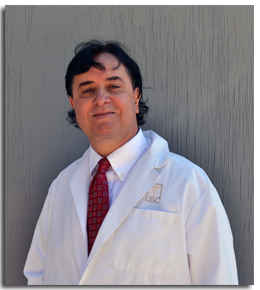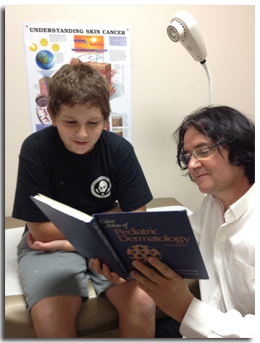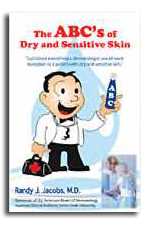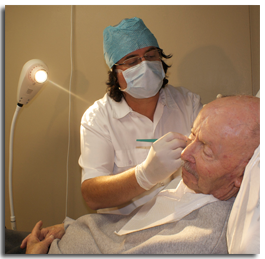Dr. Jacobs was born in Long Beach, California. After Long Beach Woodrow Wilson High School he completed six years of pre-medical studies and graduated from Loma Linda University with a B.S. in Biology and Theology Minor. Afterwards, he completed four years of Medical School at the University of Southern California School of Medicine, graduating with an M.D., and then, six years of medical residency training at Loma Linda University Medical Center. Dr. Jacobs’ six years included two internship years, one in Internal Medicine and one in Pediatrics, plus four years of post-graduate education in Dermatology.
Twenty Five Plus Years
Dr. Jacobs began working in Sun City in 1988, more than twenty five years ago, when Temecula and Sun City, were smaller towns. Over the years, Dr. Jacobs’ clinic has cared for over 500,000 patients.
|
 |
Board Certification
Dr. Jacobs now serves on the teaching faculty of Loma Linda University as Assistant Clinical Professor, also teaches UCLA / UCR medical students, is a Diplomat of the American Board of Dermatology, a Fellow of the American Academy of Dermatology, and a Member of the American society for Mohs Surgery. On his most recent Board exam, Dr. Jacobs scored 100% in medical dermatology.
Kenneth Alpern, MD, FAAD
Charity Morris, PAC
Robert Phillips, PAC
Our office works as a team. In addition to Dr. Jacobs, our dermatology team includes: Kenneth Alpern, MD, FAAD, team member since 1993. Board Certified dermatologist with special expertise in Psoriasis and General Dermatology, Robert Phillips, PAC, Derm Trained PA, team member since 2002, and Charity Morris, PAC, Derm Trained PA, team member since 2009. Each member of our team brings to you unique dermatology skills and a heart of compassion to help you and your family feel a special touch of care with a listening ear and devotion in time of need.
Our Services Include…
• Skin Cancer Prevention & Treatment
• Cryo, Electro, & Mohs Micro Surgery
• Sun Damaged, Pre-Cancerous Care
• Mole, Wart, & Skin Growth Removal
• Acne, Rosacea, & Complexion Care
• Dry-Sensitive Skin Care & Hand Care
• Laser Care for Acne, Scars, & Wrinkles
• Facial Peels, Botox, Juvederm Care
• Leg Vein “Spider Vein” Sclerotherapy
Ask about Saturday office appointments.
Temecula (951) 296-1766
Sun City (951) 672-7673
Corona (951) 737-3376
|
 |
Is It a Melanoma?
Melanocytic skin cancers include melanoma in situ and malignant melanoma, and can develop from a “dysplastic” mole. Melanoma skin cancer can be the deadliest, but is often preventable.

|
Ask the ABCD’S.
A. Asymmetry – Is the left half different from the right half?
B. Border – Does the border have uneven jagged edges?
C. Color – Are there two or more colors?
D. Diameter – Is the diameter greater, larger than six mm?
Learn the ABC's of Dry & Sensitive Skin by downloading the free ABC Booklet by clicking on the image to the left.
|
Signs & Symptoms
1. Is there a family history of melanoma?
2. Do family members have many moles?
3. Ever sunburned or used a tanning bed?
4. Do any spots show signs or symptoms?
Bleeding? Itching? Scaling? Growing? Changing Color?
Two ABCD’S positive out of five may be a sign your mole needs a biopsy.
Doctor, is it skin cancer?
This is an important question, especially if you have fair skin and have tanned or sunburned. Skin cancer is the number one cancer in humans, far exceeding the total of all other cancers. With diminishing ozone, one in six Americans will get skin cancer in his or her lifetime. “Doctor, I haven’t been in the sun for 30 years.”
The fact is, skin cancer may not appear until 10, 20, 30, or 40 years after a sunburn. How can you tell if you skin cancer? Skin cancer usually begins as a small non-healing spot on the skin.
The spot does not hurt, but may itch or bleed.
|
 |
Many do not see a doctor until pain or bleeding occurs, or until the spot has grown into a larger tumor. A simple way to understand skin cancer is to categorize it as either 1. Non-melanoma skin cancer or 2. Melanoma type skin cancer.
Is it AK, BCC, or SCC?
Non-melanoma skin cancers usually grow from precancers on sun exposed sunburned skin, and can form Basal Cell Carcinoma (BCC) and Squamous Cell Carcinoma (SCC).
AK: Actinic Keratoses are precancerous scales that grow on sun damaged skin. If left untreated, AK’s can become more aggressive BCC or SCC skin cancers.
BCC is a low-grade cancer that can cause severe facial disfigurement or loss of an eye, nose, or ear if not treated. SCC is a skin cancer that can spread to your lymph nodes if not treated. A simple ounce of prevention is worth a pound of cure.
Are you at risk?
Are you at risk for skin cancer? Should you be concerned? Finding out is easy to do. Here are six easy questions to ask and see if you are at risk for skin cancer.
1. Do you have a persistent non-healing sore on your skin?
2. Do any of your relatives have a history of skin cancer?
3. Have any of your moles changed in color, shape, size?
4. Are your eyes blue, green, hazel?
5. Is your skin fair or light in color?
6. Have you ever been sunburned?
If you answered “yes” to any, you are at risk and must get checked!
|



